Showing Spotlights 681 - 688 of 2783 in category All (newest first):
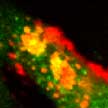 Researchers have demonstrated that a specific type of two-dimensional (2D) nanoparticles, nanosilicates, can grow bone and cartilage tissue from stem cells in the absence of growth factors. These nanoparticles are similar in shape to a coin, but 10 billion times smaller in size. Nanosilicates consist of minerals such as sodium, silicate, magnesium and lithium, which are already present in the body. This avoids the use of growth factors in the human body, which can generate harmful effects including unwanted tissue growth, such as a tumor.
Researchers have demonstrated that a specific type of two-dimensional (2D) nanoparticles, nanosilicates, can grow bone and cartilage tissue from stem cells in the absence of growth factors. These nanoparticles are similar in shape to a coin, but 10 billion times smaller in size. Nanosilicates consist of minerals such as sodium, silicate, magnesium and lithium, which are already present in the body. This avoids the use of growth factors in the human body, which can generate harmful effects including unwanted tissue growth, such as a tumor.
Apr 13th, 2018
 Sepsis is the body's extreme response to an infection. It is life-threatening condition in which bacteria or fungi multiply in a patient's blood - often too fast for antibiotics to help. Without timely treatment, sepsis can rapidly cause tissue damage, organ failure, and death. A critical unmet need in combating sepsis is the lack of accurate early biomarkers that can alert clinicians to a potential life-threatening situation and allow them to take preventative action. In a new study, researchers report the development of a point-of-care platform for rapid sepsis detection, called IBS (integrated biosensor for sepsis).
Sepsis is the body's extreme response to an infection. It is life-threatening condition in which bacteria or fungi multiply in a patient's blood - often too fast for antibiotics to help. Without timely treatment, sepsis can rapidly cause tissue damage, organ failure, and death. A critical unmet need in combating sepsis is the lack of accurate early biomarkers that can alert clinicians to a potential life-threatening situation and allow them to take preventative action. In a new study, researchers report the development of a point-of-care platform for rapid sepsis detection, called IBS (integrated biosensor for sepsis).
Apr 12th, 2018
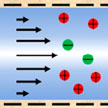 The ability of nanochannels to regulate transported substances in confined spaces is of great research interest in innovative applications, such as high-resolution sensing, filtering, and high-efficiency energy utilization. In the last area, research on nanochannels in energy-related areas continues to face challenges such as low efficiencies, complex preparation processes, and high fabrication costs. Overcoming these challenges is an important and difficult task in the field of energy conversion, energy conservation, and energy recovery.
The ability of nanochannels to regulate transported substances in confined spaces is of great research interest in innovative applications, such as high-resolution sensing, filtering, and high-efficiency energy utilization. In the last area, research on nanochannels in energy-related areas continues to face challenges such as low efficiencies, complex preparation processes, and high fabrication costs. Overcoming these challenges is an important and difficult task in the field of energy conversion, energy conservation, and energy recovery.
Apr 10th, 2018
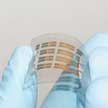 Next-generation electronic devices will be highly portable, wearable - even transplantable - lightweight, and most likely self-powered. Among the various functional block required for these systems (such as displays, sensors, actuators, etc), some of the most important components are novel flexible data storage systems that possess nonvolatile ability, high-density storage, high-switching speed, and reliable endurance properties. Especially organic memories have been considered as the most promising candidates to be used in various portable and wearable systems in future due to their remarkable advantages of nonvolatile memory features, low cost, easy fabrication, and flexibility.
Next-generation electronic devices will be highly portable, wearable - even transplantable - lightweight, and most likely self-powered. Among the various functional block required for these systems (such as displays, sensors, actuators, etc), some of the most important components are novel flexible data storage systems that possess nonvolatile ability, high-density storage, high-switching speed, and reliable endurance properties. Especially organic memories have been considered as the most promising candidates to be used in various portable and wearable systems in future due to their remarkable advantages of nonvolatile memory features, low cost, easy fabrication, and flexibility.
Apr 9th, 2018
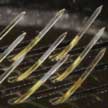 Whiskers on animals allow them to build a rich understanding of their environment by feeling objects or even the flow of fluids. Many animals can also actively sweep, or 'whisk', their whiskers, enabling them to gather complex information about the architecture of their environment. Researchers have replicated this whisking action by exploiting the shape memory effect of a polymer substrate, which can be dynamically repositioned by modulating the temperature and air flow across the electronic whiskers (e-whiskers).
Whiskers on animals allow them to build a rich understanding of their environment by feeling objects or even the flow of fluids. Many animals can also actively sweep, or 'whisk', their whiskers, enabling them to gather complex information about the architecture of their environment. Researchers have replicated this whisking action by exploiting the shape memory effect of a polymer substrate, which can be dynamically repositioned by modulating the temperature and air flow across the electronic whiskers (e-whiskers).
Apr 3rd, 2018
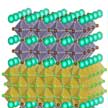 Halide perovskites have attracted tremendous interest due to their fascinating optoelectronic properties. Driven by the concerns of toxicity derived from lead and instability caused by organic components, researchers have turned to all-inorganic lead-free halide perovskites. However, compared to hybrid lead perovskite, lead-free compositions usually demonstrate poor crystallinity, low ordering, and high defects that suppress the performance of optoelectronic devices. Scientists now have deployed a new approach to grow all inorganic lead-free halide perovskites.
Halide perovskites have attracted tremendous interest due to their fascinating optoelectronic properties. Driven by the concerns of toxicity derived from lead and instability caused by organic components, researchers have turned to all-inorganic lead-free halide perovskites. However, compared to hybrid lead perovskite, lead-free compositions usually demonstrate poor crystallinity, low ordering, and high defects that suppress the performance of optoelectronic devices. Scientists now have deployed a new approach to grow all inorganic lead-free halide perovskites.
Mar 29th, 2018
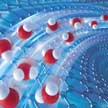 For most viscous liquids, the solid surface of surrounding channel walls poses friction resistance to the flowing liquid, causing a loss of velocity at the liquid/solid interface. As a result, for regular surfaces the energy required for nanofluidic applications is enormous because of the tremendous hydraulic resistance inside nanoscale conduits. A new technique to accurately measure the hydraulic resistance inside graphene nanofluidic channels makes increasing the efficiencies of most nanofluidic applications possible.
For most viscous liquids, the solid surface of surrounding channel walls poses friction resistance to the flowing liquid, causing a loss of velocity at the liquid/solid interface. As a result, for regular surfaces the energy required for nanofluidic applications is enormous because of the tremendous hydraulic resistance inside nanoscale conduits. A new technique to accurately measure the hydraulic resistance inside graphene nanofluidic channels makes increasing the efficiencies of most nanofluidic applications possible.
Mar 28th, 2018
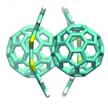 In new work employing the photostrictive effect, researchers have fabricated a flexible two-dimensional (2D) charge transfer molecular (sub-nanometer) nanosheet and observed a sizeable photostrictive effect of 5.7% with fast, sub-millisecond response; this is higher than that of some conventional ferroelectronics and polar semiconductors. This photostrictive effect arises from excess charge carriers induced lattice dilation and conformation change, which is higher than that of some conventional ferroelectronics and polar semiconductors.
In new work employing the photostrictive effect, researchers have fabricated a flexible two-dimensional (2D) charge transfer molecular (sub-nanometer) nanosheet and observed a sizeable photostrictive effect of 5.7% with fast, sub-millisecond response; this is higher than that of some conventional ferroelectronics and polar semiconductors. This photostrictive effect arises from excess charge carriers induced lattice dilation and conformation change, which is higher than that of some conventional ferroelectronics and polar semiconductors.
Mar 27th, 2018
 Researchers have demonstrated that a specific type of two-dimensional (2D) nanoparticles, nanosilicates, can grow bone and cartilage tissue from stem cells in the absence of growth factors. These nanoparticles are similar in shape to a coin, but 10 billion times smaller in size. Nanosilicates consist of minerals such as sodium, silicate, magnesium and lithium, which are already present in the body. This avoids the use of growth factors in the human body, which can generate harmful effects including unwanted tissue growth, such as a tumor.
Researchers have demonstrated that a specific type of two-dimensional (2D) nanoparticles, nanosilicates, can grow bone and cartilage tissue from stem cells in the absence of growth factors. These nanoparticles are similar in shape to a coin, but 10 billion times smaller in size. Nanosilicates consist of minerals such as sodium, silicate, magnesium and lithium, which are already present in the body. This avoids the use of growth factors in the human body, which can generate harmful effects including unwanted tissue growth, such as a tumor.
 Subscribe to our Nanotechnology Spotlight feed
Subscribe to our Nanotechnology Spotlight feed





